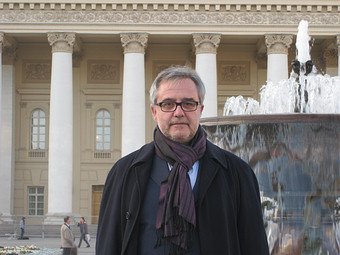From the edges of Christianity, Ethiopia will raise its hands to God. Images of ancient tradition
In the European imagination, Ethiopia is a Christian Empire of the unknown and fascinating Africa from which the Queen of Saba had left to meet Salomon.
But in this remote country of legends and faith, the lively people expressed their Christian devotion both in the political and the religious organization. The emperor negus neghesti had to defend the faith and ward off the attacks of the Muslims, and therefore was often in war to maintain the identity of its population. The Church unified the population, and given the high rate of illiterateness, it transmitted the Christian message through images and symbols that grew more and more sophisticated and beautiful throughout time. The living strength of the faith was an inspiration to the daily life, it prompted creativity and developed new expressions of the religious belief.
Nevertheless, one of the characteristic features of the Ethiopian culture has always been the bond to the tradition, which led to a certain immobility of the Ethiopian society.
Nowadays, the situation has changed, and the economic and political conditions are evolving towards modernity, in a continuous fight against poverty aimed at meeting the needs of the growing population (about 100 million people), the second in number of the African continent. Addis Ababa is also the seat for the African Union.
In the ongoing modernization process, the Orthodox and their Church are looking for a public role (just like the Muslim minorities) in spite of the new Constitution declaring the separation of Church and States, and they are trying this by strengthening as much as possible the historic Christian identity of public culture. The continuity of the forms of devotion is a good measure, in this sense. Abba Paulos I, Patriarch of the Ethiopian Orthodox Church, said: “The invisible God, who desired to be adored through visible objects, gave ability to the skilled workers to make the sacred objects (Exodus 31:6)” .[1]
The sacred objects worshipped by the Church of Ethiopia are most of all crosses; icons; liturgical books; biblical and devotional manuscripts; wall paintings and frescos in the churches; objects used in the liturgical celebrations like the chalice, the mesoba worq (pix), etc.
In the Christian ecumene, the Ethiopian icons represent an extremely original chapter: they have a history, an identity and unique physical characteristics, evidence of a Christian art that is fully African and fully Christian. Many influences affected the Ethiopian artistic production, from the churches of the byzantine empire, Venice etc., testifying the connection between oriental and occidental Christianity and the bond between liturgy and icon in the transmission of the Christian message. Between poverty and struggle for survival, the visible, fascinating representation of the evangelic message in its communicative simplicity revealed to the people the sense of their dignity, the opening towards transcendence, towards the mystery of God that entered history through the presence of Jesus, towards themselves with expectations beyond any limitation or circumstances.
The Christian art of Ethiopia developed in a unique context, but it encloses a universal message, a plea for transcendence. The icon cannot be separated from the faith and from the religious practice, and therefore the apparent immobility opens to a fascinating spiritual dynamic. We want this to be the goal of the exhibition at the Meeting of Rimini: the beginning of a dialogue with the Ethiopian Orthodox Church starting from the shared Christian message.
An exhibition of icons, manuscripts, crosses from Ethiopia will highlight the double function of these artistic objects: the glorification of God, i.e. a purely liturgical and devotional aspect, and the support to the dignity of the people beyond the limits of the circumstances, i.e. the social dimension. The Meeting is the fourth stop-over of this exhibition, the previous ones being Venice, Pordenone and Vicenza.
You will find about 80 pieces chosen from a private collection, which include bronze and copper crosses, wooden tables, manuscripts, icons, tapestries; and a video about the liturgical and social life of Ethiopia.
You will also find a poit dedicated to the Catholic University of Addis Ababa.










